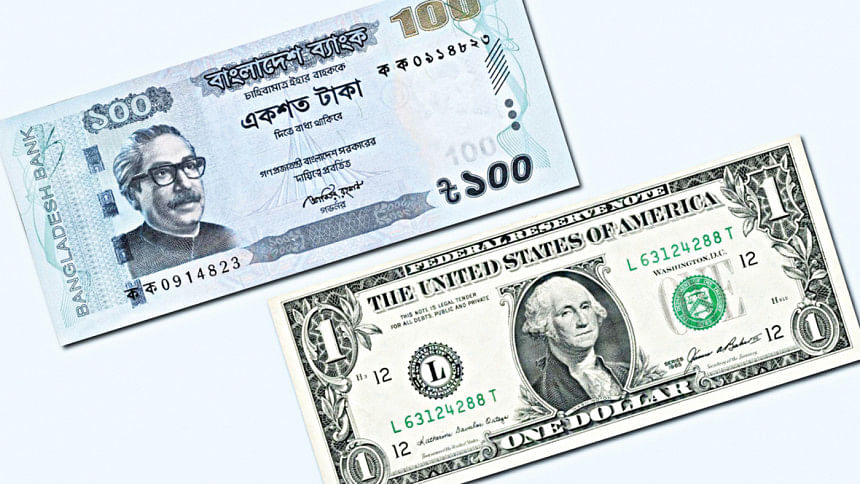
Mamun Rashid : A question I often encounter these days is: “What is the right price for the dollar and more importantly where the dollar price may go?” With an apprehension of the dollar price going further up, whoever can afford is reportedly buying cash dollars and keeping them at home.
In a welcome move, the central bank recently came up with a circular, saying people can bring cash in foreign currencies while returning from abroad, deposit them in resident foreign currency deposit accounts, non-resident foreign currency deposit accounts, and other foreign currency accounts with local banks and banks would pay an attractive return.
Though the central bank in the past goofed up by arbitrarily debiting 50 percent of the export retention quota balance, I think the latest decision may help bring back some trust into the system.
Of course, we need the central bank and the market operators to come up with the right price for the dollar. No matter who thinks what, the market should decide the dollar rate. Even if the price goes up significantly once left to the market, history and other emerging market experiences tell us the market will eventually align with the right level.
Some banks in Bangladesh reportedly are paying Tk 120-125 per dollar to remitters abroad. This is in violation of the maximum rate of Tk 116 per dollar set for inward remittance by the Bangladesh Foreign Exchange Dealer’s Association (BAFEDA) and the Association of Bankers, Bangladesh (ABB), based on an unofficial directive of the Bangladesh Bank.
While this trend has increased the remittance earnings for some banks in the interim, we are apprehensive of its potential repercussions in the long run. Some effects are already visible.
A few state-owned banks were saying since they were unable to defy the BAFEDA-ABB rate like some of their private sector counterparts, the banks have been losing out on foreign exchange earnings. Such violations occurring in less than two months after the central bank fined 10 banks for manipulating the dollar exchange rate is saddening. Ironically some portals also reported that the central bank, though may be aware, is shy of taking action against banks offering higher rates.
However, I don’t think banks can solely be blamed for this situation. Even with the official rates, the outflow of foreign exchange clearly surpasses the inflow. Unofficially, banks have to buy dollars from exporters and remitters at higher rates, as the head of treasury of a private bank was quoted by a daily. I am sure many would echo him.
This is certainly not sustainable as banks stand to incur significant losses. The responsibility to check this, one would loudly say, lies with the regulators. This situation has once again brought to light their failure to make pragmatic decisions to maintain discipline in the banking sector.
Right now, the central bank should ensure that all banks operate under its ambit. To this end, it must revise regulations in line with the market trend. A realistic adjustment of the exchange rates, as experts have been recommending for long, would serve banks, traders and all other stakeholders.
The recent experience of Sri Lanka, India and Indonesia has revalidated the popular belief that the foreign currency rate should be based on the demand and supply architecture of the market. All stakeholders can and should only make sure there are enough measures to ensure liquidity. Any haphazard way of decision-making and going back and forth could only push us back and send a wrong message to the investment community.
The author is an economic analyst









